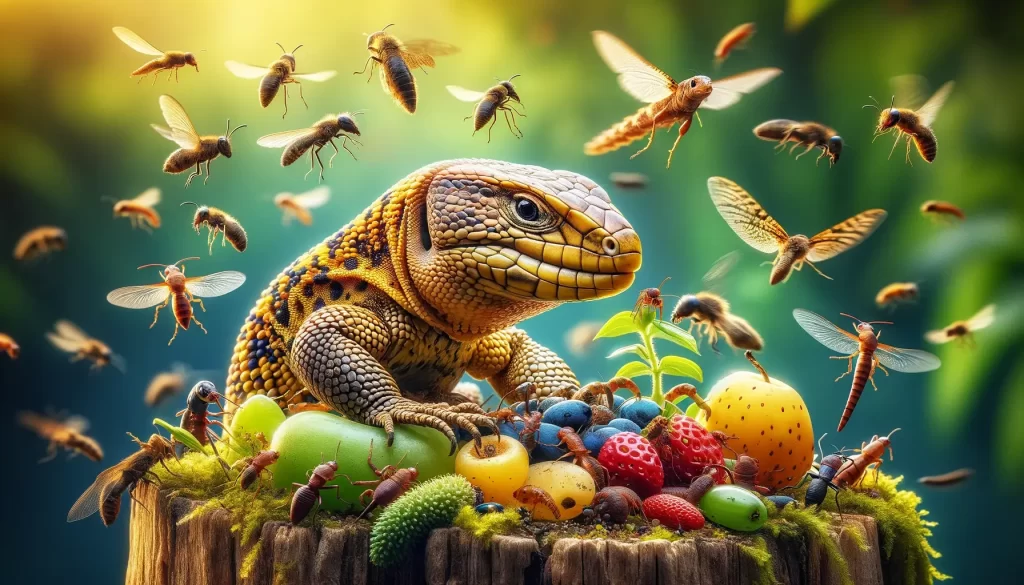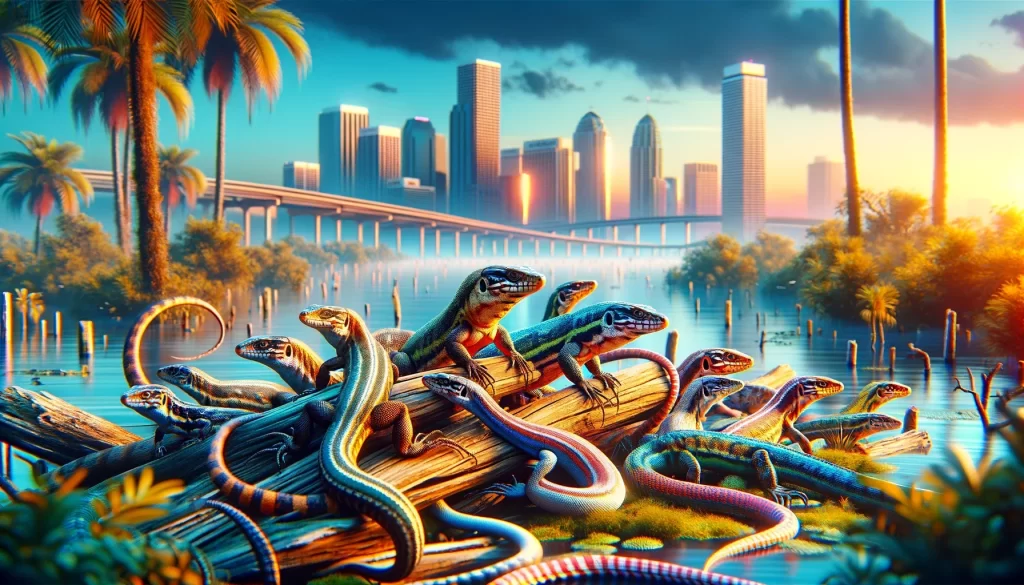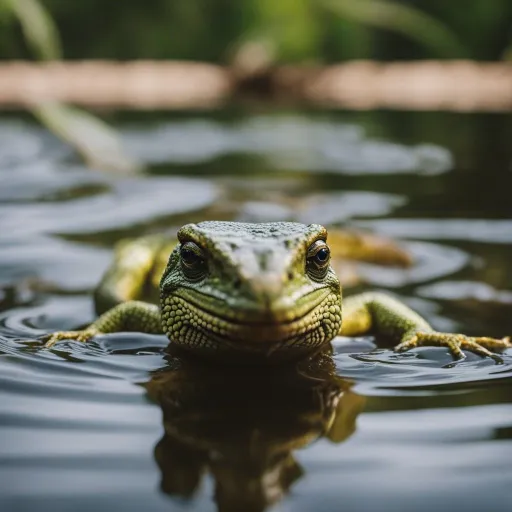
So, you want to know what armadillo lizards eat? Well, these fascinating creatures have quite an interesting diet.
Armadillo lizards are primarily insectivorous, meaning they mainly feed on insects. However, they also have a taste for small vertebrates such as lizards and mice.
In addition, these little reptiles have been known to nibble on fruits and plants. Join me as we explore the culinary preferences of armadillo lizards and uncover some surprising facts about their eating habits.
Diet of Armadillo Lizards
General Overview
Armadillo lizards, also known as armadillo girdled lizards, are fascinating creatures with unique dietary habits. These reptiles belong to the family Cordylidae and are found in the arid regions of Southern Africa. Their diet consists of a variety of food sources, including insects, small vertebrates, and plant matter.
Natural Habitat
Armadillo lizards are primarily found in rocky areas, such as mountains and hillsides, where they can find suitable crevices and burrows to hide and forage for food. These reptiles are native to various countries, including South Africa, Namibia, and Botswana. Their natural habitat provides them with the necessary resources and shelter to fulfill their dietary needs.
Physical Characteristics
Before diving into the details of their diet, let’s briefly discuss the physical characteristics of armadillo lizards. These reptiles are famous for their unique armor-like skin, which protects them from predators. They have bony plates, called osteoderms, covering their bodies, resembling the armored shells of armadillos. Additionally, their tails are long and can be curled up, serving as another line of defense.
Feeding Habits
Insect Diet
Armadillo lizards are primarily insectivorous, meaning their diet mainly consists of insects. They have a strong preference for ants and termites, which they locate by using their keen sense of smell. Once they detect a potential meal, armadillo lizards use their long, sticky tongues to catch and consume the insects. This insect-based diet provides them with the necessary protein and nutrients they need to survive.
Small Vertebrates
While insects form the bulk of their diet, armadillo lizards occasionally consume small vertebrates as well. This includes lizards, small snakes, and even small mammals. These reptiles have sharp teeth that help them grasp and consume these vertebrates with ease. These additions to their diet offer them an extra source of protein and contribute to their overall nutritional intake.
Plant Matter
Interestingly, armadillo lizards have also been observed consuming plant matter. They occasionally feed on fruits, seeds, and vegetation found in their surroundings. This plant-based component of their diet provides them with essential vitamins and minerals. However, it is important to note that plant matter forms a smaller part of their overall diet compared to insects and small vertebrates.
Hunting Techniques
Armadillo lizards employ various hunting techniques to capture their prey. When targeting insects, they rely on their excellent sense of smell to locate ant and termite colonies. Once they find a suitable source of food, they use their long tongues to snatch up the insects. The armadillo lizard’s sticky tongue helps it capture its prey quickly and efficiently.
When hunting small vertebrates like lizards or snakes, armadillo lizards use their sharp teeth to subdue and consume their prey. They have a powerful bite force that allows them to immobilize their victims. Their agility and speed also play a crucial role in successfully hunting and capturing these small vertebrates.
Consumption Frequency
Armadillo lizards exhibit a moderate consumption frequency when it comes to their diet. As insectivores, they need to consume a sufficient number of insects to meet their nutritional requirements. Their intake generally depends on the availability of prey in their environment. During periods of abundant insect populations, armadillo lizards may indulge in more frequent feeding. However, during times of scarcity, they may adjust their feeding frequency accordingly.
Dietary Adaptations
Specialized Teeth
One of the key dietary adaptations of armadillo lizards is their specialized teeth. Their sharp teeth allow them to puncture the exoskeletons of the insects they prey upon. Additionally, their teeth aid in grasping and consuming small vertebrates. These specialized dental structures have evolved to suit their specific diet and play a vital role in their feeding habits.
Digestive System
Armadillo lizards possess a unique digestive system that is well-suited for their varied diet. Unlike other lizards, they have a relatively short digestive tract. This adaptation allows for quick digestion and the efficient extraction of nutrients from their food. Even with the occasional consumption of plant matter, their digestive system can process both animal and plant-based food sources effectively.
Water Requirements
In their natural habitat, armadillo lizards rely on the moisture from their food to meet their water requirements. Insects and small vertebrates contain a considerable amount of water, which armadillo lizards derive from their diet. This adaptation enables them to survive in arid environments where water sources may be scarce.
Feeding Challenges and Solutions
Escape Tactics of Prey
When hunting, armadillo lizards face the challenge of capturing prey that may attempt to escape. Insects, in particular, have various escape mechanisms, such as quick movements or fleeing into their nests. To overcome this challenge, armadillo lizards utilize their agility and speed to catch their prey swiftly before they can escape. Their ability to detect prey by scent also gives them an advantage in locating and capturing potential meals.
Handling Venomous Prey
Some of the small vertebrates armadillo lizards prey upon, such as snakes, may possess venomous capabilities. To handle such prey safely, armadillo lizards have developed strategies to avoid harm. Their skillful use of their sharp teeth and quick reflexes allows them to subdue venomous prey without getting bitten. This adaptation showcases their ability to overcome potential dangers associated with their diet.
Herbivorous Adaptations
While armadillo lizards have been observed consuming plant matter, they are not herbivores. However, their ability to incorporate some plant material into their diet displays their adaptability. This broadens their food options and aids in acquiring essential nutrients, particularly during times when their primary food sources may be scarce.
Dietary Variations in Different Subspecies
Within the armadillo lizard species, there are several subspecies that may exhibit variations in their diet. Factors such as geographical location and available food sources can influence these variations. Some subspecies may have a slightly different preference for certain insects or small vertebrates, depending on what is readily available in their specific habitats. These subspecies adaptations contribute to the overall diversity of armadillo lizards.
Human Influence on Armadillo Lizard’s Diet
Habitat Destruction
One significant way that humans impact the diet of armadillo lizards is through habitat destruction. Urbanization, deforestation, and land development have resulted in the loss of rocky areas where these reptiles thrive. With their natural habitat shrinking, it becomes more challenging for armadillo lizards to find suitable food sources, ultimately affecting their diet and overall survival.
Invasive Species
The introduction of invasive species can also disrupt the armadillo lizard’s diet. Invasive plants or animals can outcompete native species for resources, altering the availability of food sources for armadillo lizards. This disruption can lead to changes in their diet as they may be forced to consume less-preferred or less-nutritious food items.
Human Feeding
Occasionally, armadillo lizards encounter human settlements or campsites, where they may scavenge for leftover food. While human feeding may provide them with an alternative food source, it is essential to avoid artificially altering their diet. Human food items are not suitable for armadillo lizards and can have adverse effects on their health. It is crucial to prioritize their natural diet to ensure their long-term well-being.
Role of Diet in Armadillo Lizard’s Life Cycle
Reproduction
The diet of armadillo lizards plays a vital role in their reproductive success. A well-balanced and varied diet provides the necessary nutrients for females to produce healthy and abundant eggs. Additionally, a nutritious diet contributes to the overall health and condition of both male and female armadillo lizards, which is essential for successful mating and breeding.
Growth and Development
For armadillo lizard hatchlings, a proper diet is crucial for their growth and development. Adequate nutrition allows them to grow quickly, develop strong skeletal structures, and build up energy reserves for survival. The availability of suitable food sources during their early stages of life greatly influences their growth trajectory and ability to thrive.
Survival Rate
The diet of armadillo lizards also impacts their overall survival rate. A lack of sufficient food resources or inadequate nutrition can weaken their immune systems and make them more susceptible to diseases and predation. A well-balanced diet ensures that they have the necessary energy and nutrients to maintain good health, increasing their chances of survival in their native habitats.
Future Research on Armadillo Lizards’ Diet
Nutritional Requirements
Further research on the nutritional requirements of armadillo lizards can provide valuable insights into their diet. Understanding the specific dietary needs of these reptiles, including the ideal balance of protein, vitamins, and minerals, can contribute to their overall conservation and ensure their optimal health in captive environments, if necessary.
Predation Impact
Investigating the impact of predation on armadillo lizards and their diet can shed light on the complex dynamics of their ecosystems. Studying the predators that prey upon armadillo lizards and their respective dietary habits may reveal important interactions and dependencies between species. This knowledge can aid in understanding and preserving the delicate balance of these ecosystems.
Impact of Climate Change
As climate change continues to affect various habitats worldwide, examining the potential impact on armadillo lizards and their food sources will be crucial. Changes in temperature, rainfall patterns, and vegetation availability may lead to shifts in the availability of their prey items. Researching these potential effects can help develop conservation strategies to mitigate the negative impacts of climate change on the armadillo lizard population.
Final Thoughts
In conclusion, armadillo lizards have a diverse diet consisting of insects, small vertebrates, and occasional plant matter.
Their specialized teeth, digestive system, and water requirements are well-suited for their dietary needs.
Human activities such as habitat destruction and the introduction of invasive species can disrupt their diet, emphasizing the importance of conservation efforts.
Understanding the role of their diet in their life cycle and conducting further research on their nutritional requirements and ecological relationships can contribute to the long-term survival and well-being of armadillo lizards



